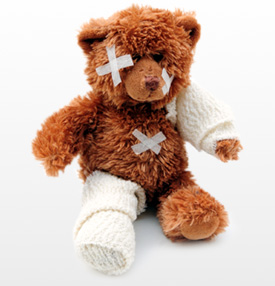n.
- Direct identification with, understanding of, and vicarious experience of another person's situation, feelings, and motives.
I understand that pain is a subjective symptom. It is difficult to quantify pain. It is definitely easier to understand someones pain if you have experienced the same or similar pain that a person is suffering from. I have been athletic for most of my life. I am fortunate to have been relatively injury free for most of my sporting career. I have had a few broken bones, a number of sprained ankles, and a hand full of concussions. I am still involved in athletics and am dealing with a few more aches and pains than I did when I was younger. I currently suffer from a minor meniscus tear in my knee that may require surgery in the future, I have a small rotator cuff tear in my shoulder (from years of pitching in baseball with poor mechanics), and am currently dealing with a high ankle sprain (from a hockey game I played a few days ago). Dealing with these injuries helps me better understand what someone with knee pain, or shoulder pain, or an ankle sprain would go through, as well as what would be expected for treatment and recovery. Though it is never fortunate when one suffers an injury, I believe I am fortunate to have experienced what these injuries feel like. I believe that this makes me more empathetic towards patients who have suffered or are currently suffering from these types of "aches and pains." I deal with athletic (and non-athletic) patients who suffer from similar complaints. In fact, some of them find it quite surprising that when I explain their symptoms to them while they are describing what their problem is!
I have been athletic for most of my life. I am fortunate to have been relatively injury free for most of my sporting career. I have had a few broken bones, a number of sprained ankles, and a hand full of concussions. I am still involved in athletics and am dealing with a few more aches and pains than I did when I was younger. I currently suffer from a minor meniscus tear in my knee that may require surgery in the future, I have a small rotator cuff tear in my shoulder (from years of pitching in baseball with poor mechanics), and am currently dealing with a high ankle sprain (from a hockey game I played a few days ago). Dealing with these injuries helps me better understand what someone with knee pain, or shoulder pain, or an ankle sprain would go through, as well as what would be expected for treatment and recovery. Though it is never fortunate when one suffers an injury, I believe I am fortunate to have experienced what these injuries feel like. I believe that this makes me more empathetic towards patients who have suffered or are currently suffering from these types of "aches and pains." I deal with athletic (and non-athletic) patients who suffer from similar complaints. In fact, some of them find it quite surprising that when I explain their symptoms to them while they are describing what their problem is!





